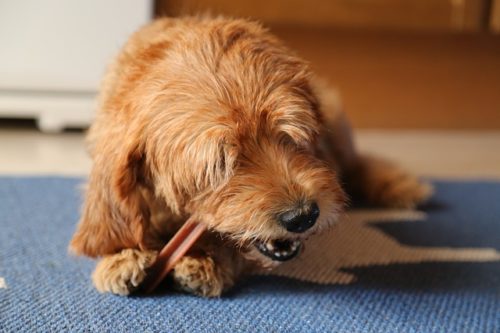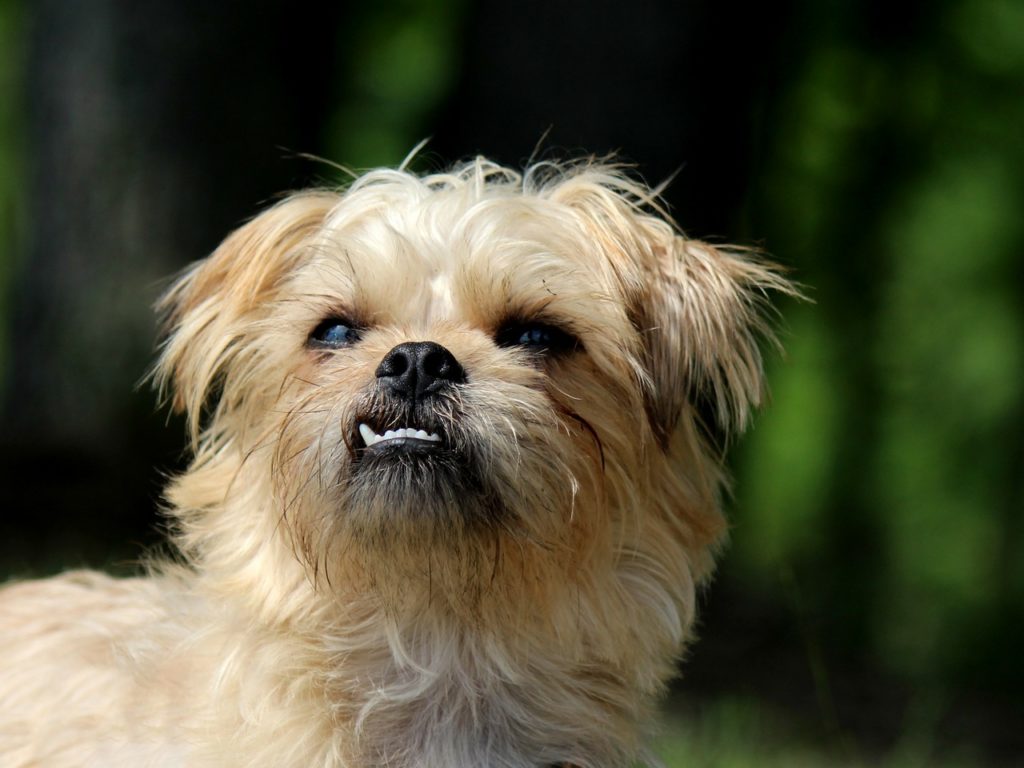Dog owners perform a variety of tasks daily in order to maintain and improve their dog’s mental and physical health. Owners regularly feed them healthy dog food, give them water, take them outside to relieve themselves, and make sure that they are getting regular walks, play time and exercise. Most dogs love all of these activities and most owners do as well. However, there are some tasks that both owners and dogs alike groan at or despise, such as trips to the vet, baths, and brushing their teeth. Doggy dental care, in particular, can be a monumental pain and your canine might absolutely loathe the sensation or experience. They might literally fight you tooth and claw to prevent you from getting up into their teeth and gums. Despite this, just like with children, sometimes you have to do things that your dog might hate in the short run, but are extremely beneficial to him in the long run.
Even though most dogs are not showing off their pearly whites for photos, they absolutely need dental care. If you do not take care of your dog’s teeth, what begins as tartar accumulation and bad breath can turn into periodontal disease.
Periodontal Disease in Dogs
Periodontal disease in dogs is a very common disease and affects more than 80% of those that are 3 years or older. This prevalence increases the older they grow and there is an inverse relationship between it and body weight; the larger a dog, the less likely he will be affected. At its most basic form, periodontal disease is a progressive inflammation affecting the tissues that surround the canine’s teeth. This inflammation undermines the support structure to your dog’s teeth and in turn causes them to loosen and eventually fall out. If a dog’s tooth falls out, nine times out of ten it is due to periodontal disease.

How it occurs:
- Bacteria forms plaque on the teeth.
- Plaque combines with minerals in saliva to form tartar, which is harder to get off the teeth.
- Bacteria moves beneath the gums leading to gingivitis.
- Gingivitis causes inflammation in the gums.
- Bacteria under the gums attack and devastate tissue that supports the tooth.
- Tooth falls out.
While tooth loss is a huge negative, this bacteria can also travel along their bloodstream to infect their kidney, heart and liver, which in turn leads to dramatically shorter lifespans.
Potential Signs of Periodontal Disease in Dogs
- Bleeding of the gum line
- Difficulty chewing
- Drooling, may have blood
- Facial swelling
- Gum recession
- Halitosis AKA bad breath
- Loss of appetite
- Loose teeth
- Pawing at mouth
- Nasal discharge
How to Prevent Periodontal Disease in Dogs
Like any health issue, the earlier you combat it the better. So, if you have a puppy, you should start brushing their teeth as early as possible so that he will become conditioned to the sensation and process. Starting the habit of brushing your dog’s teeth early will help it become routine. The goal is to brush your dog’s teeth every single day, but realistically, at the very least a few times per week. Even if it is only on time a week, that is better than completely neglecting the issue. Keeping your dog’s mouth healthy is vital for its overall health and brushing is the optimal way to remove plaque and prevent plaque from turning into tartar, which is much more difficult to get off.
There are a variety of dental care products such as chew toys, pastes and solution that can also supplement regular brushing. That said, many dogs can be one-sided chewers, so the supplemental product might not be as effective on both sides of the mouth. Even then, these things are not nearly as effective at removing plaque and tartar as regular brushing.

Do not EVER use human toothpaste for brushing your dog’s teeth. It can be harmful if swallowed by your pup. There are plenty of dog-friendly varieties that are designed specifically for their bodies, teeth and gums. While you can use a children’s toothbrush, a finger toothbrush or more homemade swabs, it is recommended that you purchase a toothbrush meant for dogs.
When brushing, lift your dog’s lip to reveal his teeth and gums. Brush gently with small, circular motions in a similar manner to how your brush your own teeth. Clean all of the outside surfaces and pay special attention to the back upper molars and canines. Once you are done, give your dog a reward, either a treat, play or rub, so you positively condition him to see this as a positive experience.
Professional Teeth Cleaning for Dogs
Even if you are cleaning your dog’s teeth daily, it is recommended that adult dogs have their teeth professionally cleaned at least once a year. Most dogs will not let you clean the inside of their teeth, but doggy dentists will be able to while they are under anesthetic. This cleaning time also allows the dentists to survey your dog’s physical health and see if there are any other potential health issues.
You already have built up a routine of regular things you do to improve your dog’s life. Be sure to include consistent teeth cleaning to give him a happier and healthier life.




